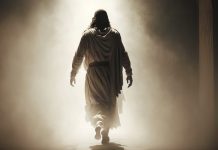I still remember May 21, 2011, like it was yesterday. Thousands of kilometres away in Boulder, USA, an evangelist named Harold Camping, president of the popular ministry Family Radio, was in the news spotlight. He had predicted that on May 21, more than 200 million Christians all around the world would be raptured away to heaven and that five months later, the world would end.
This, of course, never came to pass. On May 22, Camping himself was “flabbergasted” (his words) that the rapture did not occur when he had predicted, insisting he needed to return to the Bible in order to discover the correct time and date.
I didn’t take any of this seriously. To me, it was almost comedic. Most regarded Camping and his predictions in much the same way. Several atheist groups made it a point to protest the (in their opinion) “non-event”, one group going so far as to stand on Hollywood Boulevard holding signs such as “honk if I can have your car post-rapture”, and “the end is far away”. However, there were those who took Camping’s predictions with deadly seriousness. Many quit their jobs, sold their possessions and donated it all to the ministry.
Tragically, there was one report that a Russian teenager, so gripped by fear, convinced she wasn’t going to be saved, took her own life. In the wake of this “great disappointment”, Family Radio declined to return any of the $US18 million it received in donations in 2009, despite the fact the ministry at the time was estimated to be valued around $US72 million.
As one might expect, weeks and months went by, with Camping revising his predictions several more times, until giving up completely. His congregation dwindled, supporters left for greener pastures and eventually he was forced out of Family Radio completely. He suffered a stroke in June 2011 and never fully recovered, passing away in late 2013.
Ancient prophets
If all we knew of the prophetic were figures like Camping, we’d be surprised at the accounts of the prophets in the pages of the Bible. Take for example, Jeremiah, who lived during the final years of the declining kingdom of Judah in the sixth century BC. He worked tirelessly to warn the people that their idolatry and injustice would result in nationwide disaster. Often called “the weeping prophet”, he preached in Jerusalem for 20 years. He warned the ruling elite that unless they set aside their worship of pagan gods and began worshipping Yahweh God alone, and unless they ceased their abuse of the poor, they would face conquest at the hands of Babylon (Jeremiah 10–11).
Then there’s the prophet Isaiah, whose sermons are thought to have been collated during the Babylonian exile of the sixth century. Despite Jeremiah’s warnings, the Kingdom of Judah was conquered and subsequently enslaved by the Neo-Babylonian Empire at the hands of Nebuchadnezzar II. Through Isaiah, God proclaimed judgement on Judah’s oppressors and most of all, Babylon. Their greed and oppression would not go unpunished (Isaiah 1:24-25).
Judah wasn’t exempt, though. Their status as a nation in exile was a direct result of their own wrongdoing (Isaiah 3:14-15). However, running through the scroll is a theme of redemption. In it, God declares that through the death of a suffering servant, a day is coming when the nations of earth will be united under the good rule of God and live together in harmony (Isaiah 4:2–6).
Ezekiel lived at the same time as Jeremiah. His collection of work, much like the previous two prophets, centred around the destruction of Jerusalem and Judah. But, unlike his contemporaries, Ezekiel’s prophecies were far more cosmic. He sees weird and wonderful heavenly beings and witnesses God in all His glory and terror (Ezekiel 1:4–28). Ezekiel’s visions conclude with a valley of dry bones (chapter 37), an apocalyptic battle, and the promise of a new heaven and new earth with a restored Jerusalem at the centre (chapter 39–48).
When we come to the New Testament, the prophetic voice is very much alive and well. Zechariah and Elizabeth (the parents of John the Baptist) both have prophetic moments in relation to the birth of their son, but also in relation to the birth of Jesus (Luke 1). Likewise, Simeon and Anna (Luke 2) both have joyful experiences when they meet Jesus as a baby. Anna is identified as a prophet, and Simeon, though not described as such, nevertheless has a moving experience through God’s Spirit. John the Baptist is perhaps the most famous prophet in the Gospels, and his grisly end at the hands of Herod fits the mould of many who came before him (Mark 5).
There are also several named prophets in the early church. Judas Barsabbas, Silas, Agabus of Jerusalem, and the four daughters of Philip the Evangelist are all noted to have prophetic gifts. But, there is perhaps no better example than John and his book, the Revelation. As John unveils bizarre, cosmic imagery in his visions, he invites the reader to respond and be transformed (Revelation 22:17).
John’s Revelation uses fantastic imagery and deeply symbolic language to represent the final struggle between God, His faithful followers and the devil and his followers. At its conclusion, much like Ezekiel’s vision, evil is defeated and the nations are brought together as one at the foot of God’s throne in the New Jerusalem. Evil is defeated and death is no more.
Modern prophets
Do prophets still exist today? This is a controversial question, as many (like Camping) claim the prophetic gift. Let’s compare the two.
Ancient biblical prophets were often gifted a vision of the future, but just as important was their voice for justice. God’s retribution was always in response to either spiritual unfaithfulness or mistreatment of vulnerable people, and the prophets’ message always addressed this social issue. It’s no surprise then that this message was often met with hostility.
Jeremiah was mocked, slandered, put in prison and then thrown into a muddy cistern. Jewish tradition tells us that Isaiah was sawn in half by his own grandson, King Manasseh of Judah. John was the last living member of Jesus’ 12 disciples, and received his prophetic visions while exiled to a penal colony on a desolate island.
Are you beginning to see a pattern here? No private jets, mega churches or adoring followers.
However, that doesn’t mean prophets don’t exist today. Paul mentions the gift of prophecy in 1 Corinthians 14 as a needed gift for the church, so there’s no reason to assume it’s not necessary in the modern era. There is at least one modern-day figure who embodies the biblical prophetic voice. Seventh-day Adventists believe Ellen White, one of the church’s founders, had prophetic visions. As a founder, she was influential in the church’s early theological and social development.
This doesn’t mean everyone always agreed with her. Adventist historians today agree that her time in Australia in the late 1890s was likely a strategy by church leaders designed to get her out of their hair. This exile to Australia turned out to be a blessing, as it was during this time that she wrote some of her most impactful books. She was famous for not only her writing, but also for her willingness to correct issues of both theology and justice.
To be a prophet is often an unpopular calling. Prophets are mocked, criticised and opposed by the established order. But prophets are also privy to God’s point-of-view, and invite others to see the world the way God sees it. Prophets point out injustice and call for a better way forward. To be a prophet is to be a social commentator, a truth-teller and a visionary. Prophets who are sent by God always speak honestly, regardless of the consequences.
Does the gift of prophecy still exist today? I do know this: God is not finished with humanity. The story of humanity is still unfolding, which means the gift of prophecy may still be needed before our tale is concluded. One thing I do know for certain is that in the time we live, the world certainly needs the prophetic voice now, more than ever.
Jesse Herford is a pastor and associate editor for the Australian/New Zealand edition of Signs of the Times. He lives in Sydney, Australia with his wife, Carina and their dog, Banjo. A version of this article first appeared on the Signs of the Times Australia website and is republished with permission.




















